
El Niño/La Niña Southern Oscillation (ENSO) is a periodic oceanic atmospheric phenomenon that occurs across the tropical Pacific and is recognized to have worldwide impacts. While developing countries bordering the Pacific Ocean tend to be the most affected by ENSO, major floods and droughts around the world have been associated with ENSO, including the flooding of the Nile river basin across northern Africa as well as shifts in the monsoonal pattern across India.
Because meteorologists are not able to predict when an ENSO event is expected to develop or dissipate, knowing the local impacts of previous ENSO events across a particular region can have a valuable benefit to the area of interest. With this in mind, in order to get an idea of the local impacts across the northeastern Caribbean, specifically across Puerto Rico and the U.S. Virgin Islands, 16 high quality observation sites were selected to be analyzed, with a minimum of 2 sites from each of the different climatic zones across Puerto Rico (as defined by the National Climatic Data Center (NCDC)) and 2 from the U.S. Virgin Islands. This data was then compared to the different phases of ENSO as measured in the ENSO 3.4 region and quantified by the Climate Prediction Center (CPC).
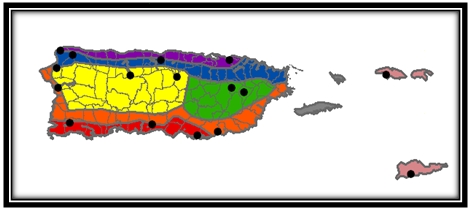
Map of Puerto Rico and the U.S. Virgin Islands identifying the stations which were used in this study. Legend: North Coast (purple), South Coast (red), North Slopes (blue), South Slopes (orange), East Interior (green), West Interior (yellow), U.S. Virgin Islands (pink)
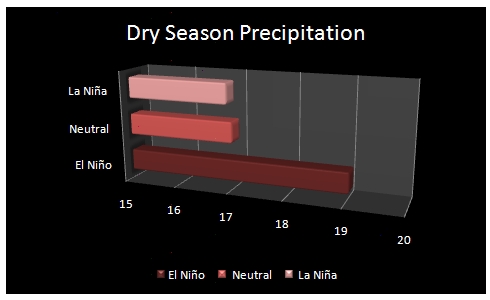 |
The effects of ENSO on precipitation across Puerto Rico and the US Virgin Islands during the dry season (December through April). |
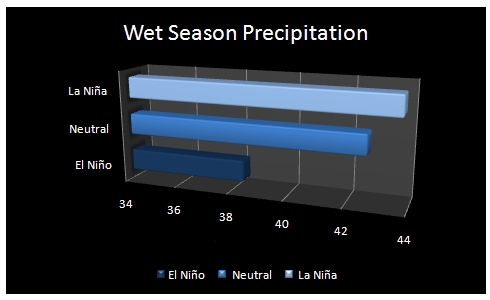 |
The effects of ENSO on precipitation across Puerto Rico and the US Virgin Islands during the wet season (May through November). |
While the signal in precipitation values was significant, equally interesting was the noted signal in temperatures (see plots below). Regardless of the season, temperatures were approximately 0.5F degrees above normal during El Niño events and temperatures were approximately 0.5F degrees below normal during La Niña events. While this 1F degree difference between the different phase of ENSO may seem insignificant, in the tropics, this 1F degree swing represents a significant deviation from normal and also represents a much larger portion of the diurnal temperature range than for a typical station at mid-latitudes.
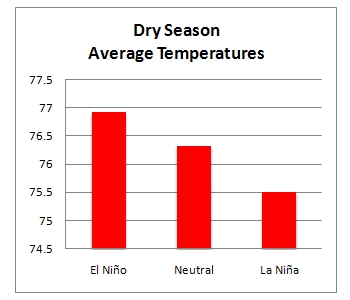 |
The effects of ENSO on temperatures across Puerto Rico and the US Virgin Islands during the Dry Season (December through April). |
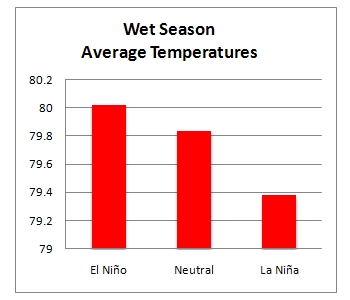 |
The effects of ENSO on temperatures across Puerto Rico and the US Virgin Islands during the Wet Season (May through November). |